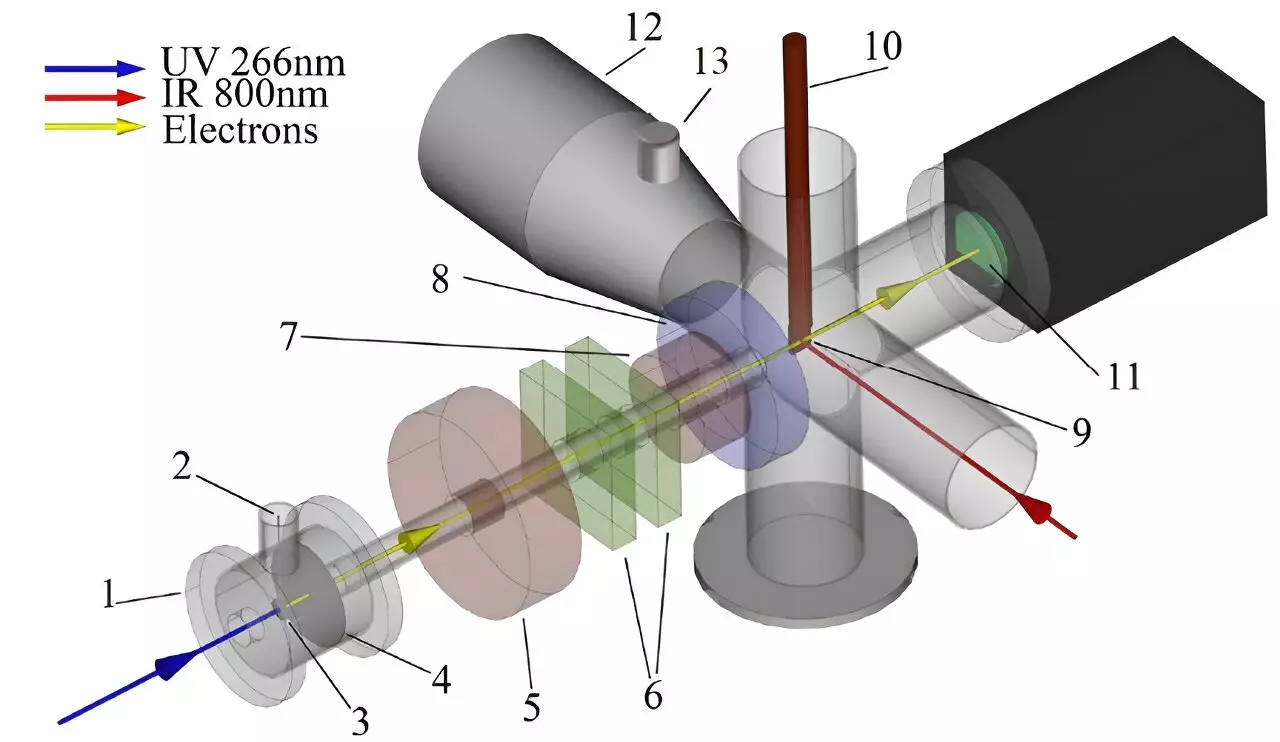In the relentless quest for faster, more adaptive electronics, scientists continually explore novel methods to control material behavior at microscopic levels. A groundbreaking discovery from researchers at EPFL has illuminated a fascinating path forward: using light as a precise tool to manipulate the fundamental states of materials. Contrary to traditional approaches that rely on temperature or pressure changes, this technology leverages specific wavelengths — or colors — of light to induce distinct and controllable phases in magnetite, a mineral with complex electronic properties.
This innovation holds the potential to redefine how we design memory storage, sensors, and other electronic devices. By exploiting the energy delivered through tailored photon pulses, scientists can switch materials between various states in mere trillionths of a second, opening doors to ultrafast, energy-efficient technological solutions that could surpass current limitations.
Understanding Non-Equilibrium States and Hidden Phases
At the core of this breakthrough lies the concept of non-equilibrium states and hidden phases. Traditional physics describes systems in equilibrium: stable, balanced states where properties like conductivity, magnetism, or structure remain constant until external conditions change. Think of water at room temperature—its properties are predictable and stable. But when energy is suddenly injected or extracted, the system can enter non-equilibrium states—unstable or metastable configurations that do not naturally occur under standard conditions.
These transient states, known as hidden phases, are particularly enticing because they harbor properties that defy conventional expectations. They’re elusive, existing fleetingly on ultrafast timescales, and can be accessed only through advanced experimental techniques. Unlocking these phases means scientists can effectively “pause” a material in an unconventional state and, crucially, steer it to desired configurations with unparalleled precision.
This ability to manipulate the phase landscape of materials at such rapid timescales signals a new era in material science, where the limits of equilibrium-driven design give way to dynamic, photo-controlled pathways.
Magnetite and the Enigmatic Verwey Transition
Magnetite — or Fe₃O₄ — is a mineral renowned for its intriguing electronic transitions. It exhibits what’s called the Verwey transition around 125 Kelvin—a sharp shift from a conducting metal to an insulating state, accompanied by specific structural changes. This transition results from a complex dance of crystal lattice arrangements, charge localization, and electron orbital ordering, making magnetite an ideal candidate to explore light-induced phase control.
What makes this study particularly compelling is how researchers directly visualized atomic motions during phase changes. Using ultrafast electron diffraction, they observed that shining different wavelengths of light on magnetite could yield remarkably contrasting structural responses, effectively toggling its electronic properties.
When exposed to near-infrared light at 800 nm, magnetite’s crystal lattice rapidly compressed, nudging it toward a cubic structure and causing a mix of metallic and insulating domains. Conversely, visible light at 400 nm promoted lattice expansion, reinforcing the original monoclinic structure associated with the insulating phase. Such instantaneous modifications highlight the finesse with which light can orchestrate structural and electronic rearrangements, surpassing mere thermal effects.
Selective Wavelengths and the Art of Material Control
What makes this discovery truly paradigm-shifting is the selectivity of the response—different wavelengths produce bespoke effects. Using near-infrared pulses, scientists can temporarily destabilize the lattice, inducing a metastable state that doesn’t occur naturally under equilibrium conditions. Blue or visible light, on the other hand, stabilizes the insulating phase, reinforcing the lattice’s order.
This dual control mechanism essentially acts as a switch, with the potential to be fine-tuned for specific applications. Imagine memory devices that can write and erase data not with electric currents in conventional transistors, but with precise flashes of light that switch the inherent electric states of a material in ultrafast timescales. This approach promises to drastically reduce energy consumption and enhance processing speeds, addressing some of the most pressing limitations of current technology.
Furthermore, the ability to induce and stabilize these hidden phases unlocks avenues for exploring new states of matter that have remained inaccessible with traditional methods—states that could harbor novel electronic, magnetic, or optical functionalities.
Implications for Future Technologies and Beyond
While the experimental findings are rooted in fundamental physics, their implications ripple far beyond the lab. The capacity to manipulate matter with light opens a pathway to the development of optoelectronic devices that are both faster and more versatile. Imagine memory chips capable of instantly switching states, or sensors that can adapt their sensitivity dynamically in response to environmental stimuli—all driven by precisely tuned light pulses.
Moreover, this sets a foundation for a broader paradigm shift: the engineering of materials that can switch between multiple phases rapidly, reliably, and reversibly. Such materials could serve as the backbone for next-generation quantum computers, neuromorphic systems, and adaptive electronics that can learn and respond in real-time.
In essence, this research signifies a critical step toward mastering the intricate dance of atoms and electrons through the power of light—a mastery that could redefine the future landscape of technology itself.


Leave a Reply